-
Posts
3,005 -
Joined
-
Last visited
-
Days Won
329
Content Type
Profiles
Forums
Gallery
Events
Downloads
KL Shop
Blogs
Articles
Classifieds
Community Map
Blog Comments posted by riffclown
-
-
-
-
-
-
indeed and agreed.
-
-
-
Flying video
-
Another more recent build.
-
 1
1
-
-
-
And this kite has found its new owner..
-
You should know me better than that

-
-
-
-
-
I truly try to learn more and more with every sail. Ones like this which I'm doing for me, I can play much more widely with the variables.. I don't want all of my sails to fly the same. I want each one to have its own personality.
-
 1
1
-
-
I know where you are coming from aesthetics wise and you are right.. Consider here though, I'm looking at the minor differences in airflow where a lap that goes with the airflow like a scale will be restricted less than a lap that has an edge along with the stitching..
With this many panels (close to 180), I might be able to incur different coefficients of drag depending on wind direction in the sail aspect.. Just starting this exercise. The Hive had a very slight forward bias. There should be slightly more drag than normal when inverted. I'm hoping that very minor difference emphasizes the feel of the sail in the inverted position. This one is more of an overall balance but with an angular bias from center along the diagonals outward and downward. I'm hoping to channel the air differently and learn more of the aerodynamics affected.
There aren't too many people that would be able to tell the difference but you would for sure.. Really hoping to get together sometime and get your honest opinion of some of my refinements after flying them.
-
 1
1
-
-
5 hours ago, Paul LaMasters said:
that's the back of the sail, correct?... with the white as a top layer
Every panel light, dark etc. has two edges frontside and 2 edges backside. It's a balance.. it shows more right now due to no sewing being accomplished yet.
-
I do double stitch the TE now but I had not looked at the Phoenix closely enough to note the LE treatment.. i'll take another look..
I am not a fan of the French Bridles.. Just a personal preference.. Also not a fan of magic sticks. They just don't alter the flying in a way that I can appreciate. Combining them IMO opinion takes some of the flow and personality from the sail...
-
5 hours ago, Exult said:
I’m all ears and learning. So, if I got this correctly, the couping is not only from the flex when pulling on all four lines and the spars that happen to be in place. It is also sewn in from the start by adding a LE curvature when the sail being is being flush? So how does this pre LE curvature induced couping happen? Is the flex happening earlier without much pulling being required or is it a constant shape when using the kite as it already was under more load? So with curved LE to coup air better you gain forward flight earlier when pulling and increased sensibility when pulling on all four lines? With a straighter LE rapid side side slides gets possible?
And regarding the two different stack lines configurations what would the difference be?
You've asked several very valid questions. First, I'll point out that There really isn't a right or wrong answer. It's a right for you or wrong for you answer.. Paul and I come from very different schools of tuning. Paul tunes heavily so each kite will fly in its appointed wind range with virtually the same inputs. It's a technique few really master but he truly has got his kite arsenal tuned to a T. I tune differently and emphasize that every sail should have it's on personality in with that (in my mind) own capability.OK, That being said, more curvature in the leading edge imparts glide into the sail as well as creating a positive tension across the belly of the sail. While there are merits to both, I typically use about 1.5 inches of total curve across the LE. Just enough to tension the sail but not enough to glide it out.. It's my choice.. I've made a few sails with a lot of Curve and they fly fine as well but, like Paul, I prefer the shape of the sail to emphasize how I fly. Since I'm making my own I actually have total control of that aspect and I've played with it extensively. Every kite before the Diamonds kite was an experiment into how adjusting, sail tension, camber, curve, and dimensions affected the way the kites fly as a whole.
As for the Flushed LE, that is accomplished by using a T Connector inside the LE Sleeve (exposed or not) which makes for a very smooth leading edge and an overall cleaner look.. it also nearly eliminates any possibility of snagging a flying line while doing axels or fades. Unfortunately the tradeoff is that T connector changes ever so slightly the length of the main stacking lines to be different than the other 5 stacklines on a sail. I DO fly stacks and to my knowledge, I'm the only person routinely throw launching a stack to fly. The Flush LE add literally another hour or so to the tuning time since you no longer have the initial starting point of all stack lines the same length.
I love Freilein, Revolution and Phoenix kites. Things I do like in those kites I incorporate into my sail. things I don't, I go my own way.
Freilein, I like their endcaps so much, they are what I choose to use for all my kites. I'm not a fan of the Flushed LE. Hole along the LE instead of mesh are fine but I don't want to spend all that time cutting holes. QC on these kites is beyond anything I've ever seen. 100% consistency across the lines.
Revolution, Truly the pioneer in this design.. Things they got right are basic layout, dimensions, the best frame process and everything Eliot Shook ever built for them. Things they got wrong, Changing the frames to "discourage copiers", adding the annoying springs to their sails to impart float, ignoring production glitches and not taking accountability for a really bad run of frames. They blamed the customer. I like Rev but those things moved me quickly to the used market to get frames from outside the bad batch. I haven't bought a new Rev since.
Phoenix, Bazzer makes (and always has made) great sails. Through inputs from iQuad, JB and the Pro series, he turned those experiences and his vision in the Phoenix. He got a lot of things right and they are beautiful sails. I like the Ashes best of the line. What Bazzer missed in my opinion the venting the trailing edge of the full sail on the Phoenix line really changes the way the sail loads up and raise the bottom number of the wind range a bit.
What I tweaked to incorporate into my sails is:
-standard width (I have 3 standards, 72", 93", 96"
-Sewn LE ends to discourage fraying and a few personal LE tweaks I learned from Eliot Shook
-Slightly shorter verticals (speeds up the sail overall without sacrificing too much of the low end)
-VERY reinforced bottom attachment points and LE End points. (To quote Eliot when I showed him my tweak, "That doesn't suck!, you might see this again"all of my sails are different and they fly somewhat differently because of that.. That's also a reason I firmly insist on flying them first, if they are a failure, then I can remake.
-
 1
1
-
-
You can do a stack with the flush LE but it does make the stack lines a bit trickier.
-
 1
1
-
-
@Paul LaMasters Thanks for the suggestions. I realize the way of the future is a flush LE but I prefer the classic approach for stackability. I may make a few with the flush LE for experimentation but that's not the plan right now. Someone we both know (MC) that won the Rev invitational Sunday said it only needed a French Bridle and Magic sticks to be right by him. Also suggested I let you fly it..
For most of these videos there was but a whisper of wind..
-
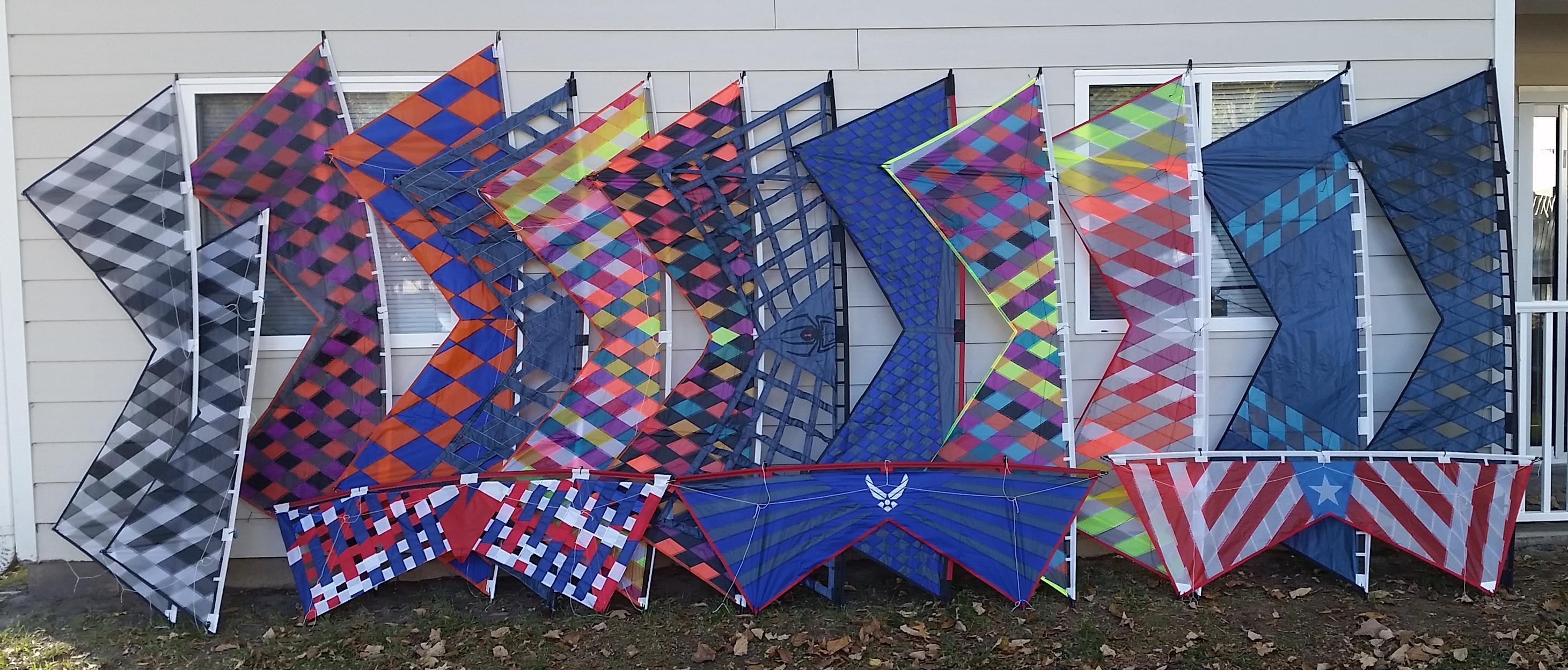
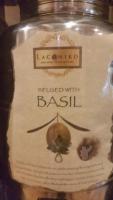
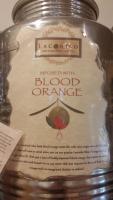
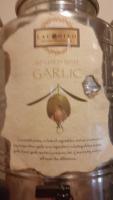
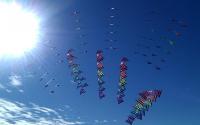
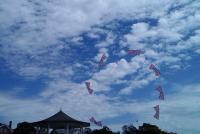
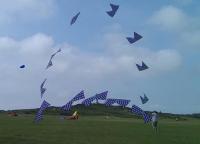

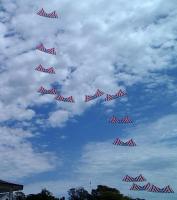
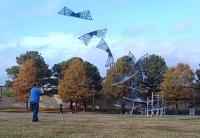
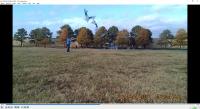

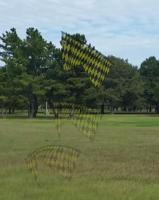
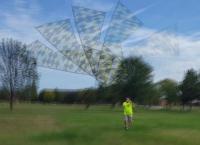
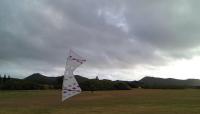

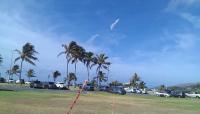
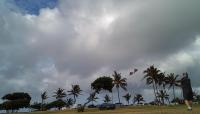
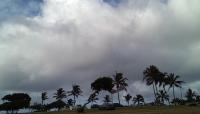

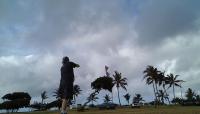
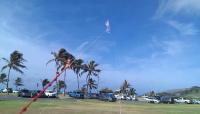
.thumb.jpg.605ac643177a7153ee54b85e9917f722.jpg)
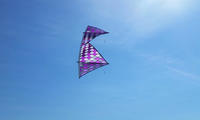
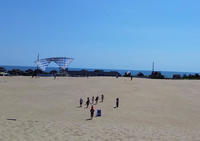
.thumb.jpg.c6072520e5963a4a50e69531f3eb1929.jpg)
.thumb.jpg.6226199011792472be7218f87f41bd50.jpg)
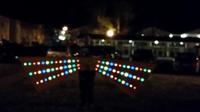


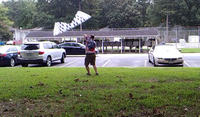
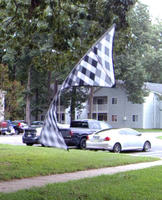
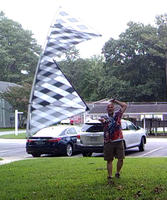
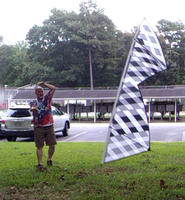
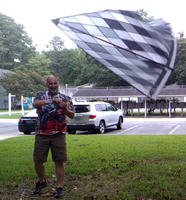
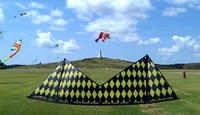
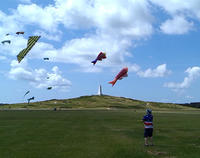
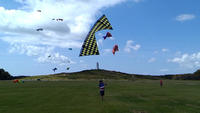

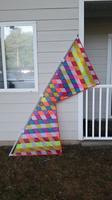
Good Luck Cellars
in riffclown's kite blog
A blog by riffclown in General
Posted
Ducks and Banners, Skates, Walas and Streamers ruled the day.